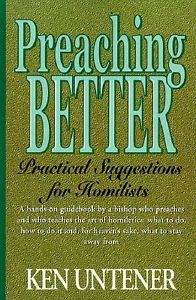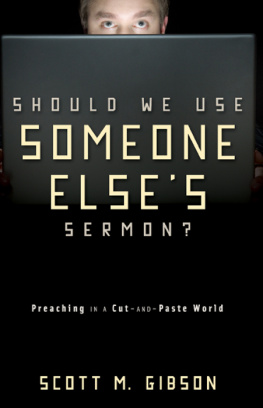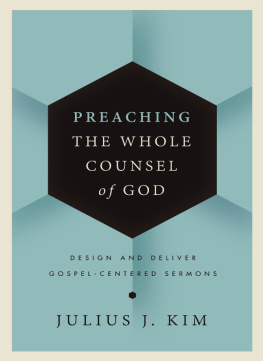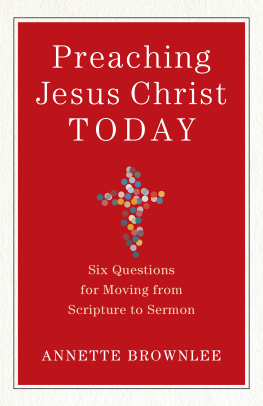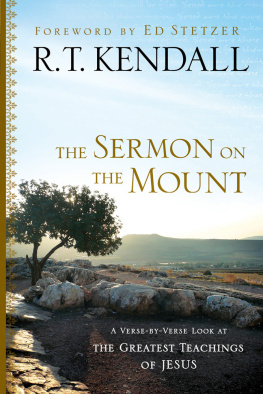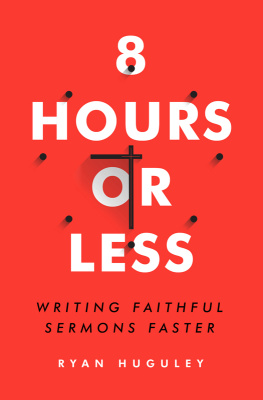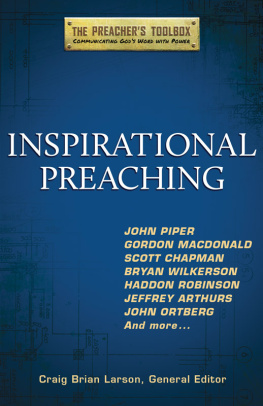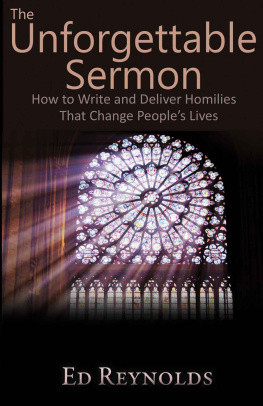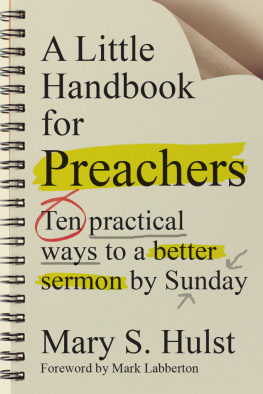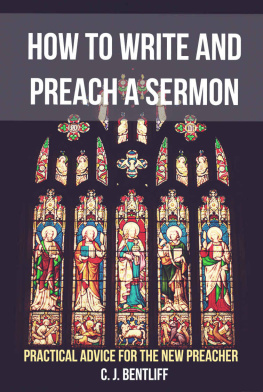20.
21.
INTRODUCTION
How All This Got Started
Practice doesn't make perfect; it makes permanent.
This book comes from theground up. It will help to know the background.
Phase I: "Feedback from the Folks"
Beginning in 1975 , I taughthomiletics part-time at St. John's Seminary just outside Detroit. My onlyqualifications were a graduate degree in theology and years of preaching.
I bought a pocket notebook and began to ask people(Columbo style) what they liked or didn't like about homilies. I asked only"the people in the pew," that is, folks who were not in ministry and,as far as I could tell, had no particular axe to grind. I did it every chance Ihad-with friends, strangers, at dinner tables, at parties, on airplanes. Theytalked; I wrote.
Surprising how willing people were (and are) to talkabout this. Others who overheard would chime in.
I've kept up the practice and by now have collectedthousands of comments. Along the way, I've sorted them into about basic categories.
The convergence is remarkable.(One category quickly began to outdistance the others as "numerouno." I'll identify it when we come to that chapter.)
These gathered comments plus my reflections on themare the heart of this book. But there is more.
Phase II: "The Saginaw Program"
In 1993,I finally got thenerve to implement a plan that had been percolating in my brain for severalyears. The Saginaw Presbyteral Council unanimously endorsed it, evenvolunteered to go first.
It works this way. I go through the list of priestsand choose four, plus a deacon or lay homilist. Then I send each a lettertelling him or her to tape (live) an upcoming weekend homily and send it to me.It is not optional. I also tape one of my own homilies and add it to the batch.
My secretary duplicates each tape as it comes in,types up a transcript, and sends each of us a copy of all of the tapes andtranscripts. (My secretary is going straight to heaven.)
A date is set for all to gather at my office for twohours, in preparation for which each listens to the tapes and makes notes.
At the two-hour session, we do what golfers do after amatch. We compliment, console, offer tips, and try to figure out how we canpreach better. This leads into wide-ranging discussions about the joys andsorrows of preaching, what works and what doesn't, and what a homily issupposed to be in the first place. I am not the teacher. I am the gatherer-myhomily is one of the six in the packet.
Honesty is the key. I remind them that this is aonce-in-a-lifetime opportunity to hear some straight talk from a cross-sectionof experienced peers. On the whole, honesty prevails and we have wonderfulconversations, at times from the depths of our souls. We're talking after allabout the heart of our ministry, which is the shaping of the community throughthe Word of God.
When we finish the two-hour session, each of usreceives a blank tape to record another weekend homily, we all go home, and thewhole process begins again. We do it four times.
It is not our expectation that after each session wewill show improvement: The intent is that these four sessions will begin atrajectory of improvement that will continue far into the future.
When we're approaching the fourth and last session, I start the nextgroup, and the next, and so on. It has continued now for more than four years.When in about two more years we've finished, we'll start again.
That is a rough sketch of the program, but there aresome important other features.
Our director of communications, a veteran journalist,joins us for part of each session. Beforehand, she selects two transcripts andedits them, using her experience as copy editor of a newspaper. She passes outcopies of the marked-up texts and goes over them, explaining her reasons forthe changes.
The written word, of course, differs from the spoken word. She takesthat into account, listening to the taped homily before editing it. She doesn'tclaim to be a homilist or a theologian; she is a journalist and applies thisskill to our homilies for whatever it's worth.
It's worth a lot. Trust me. It's an eye-opener to seeyour homily edited.
Also participating in each group is a woman who isboth a systematic theologian and an experienced spiritual director. Notregularly a homilist or liturgical minister, she too identifies with those onthe receiving end of homilies and also brings her theological/spiritualexpertise to the discussion. The presence of these two nonpreaching professionalwomen is a great asset to the group.
There is one more part of the process. A person in a neighboringdiocese has lined up a number of lay people who are willing to participate bymail. Prior to each session, six of these lay people receive one tape each,listen to it, and send in their comments on a provided form.
Because they have never heardthe homilist before, their feedback is particularly striking when it echoessome of the same comments raised in our group.
That's our "Saginaw program." It's not anintroductory course for beginners. It's "hands-on" work withexperienced homilists who are trying to help one another improve this artcalled preaching.
Hands-on Help
No one preaches to fullpotential, and none of us improves simply by doing it over and over. Practicedoesn't make perfect: It makes permanent.
Professionals in almost every field engage in something like this,formally or informally. Professional musicians help one another all the time;so do professional golfers. Authors are critiqued whether they like it or not.The National Football League uses videos to review the referees and linesmenafter every single game.
Commercial pilots are aninteresting example: Once a year, each pilot joins several other pilots for aprogram to review and improve their flying ability. Part of it is sort ofhands-on because they use a flight simulator, but during the year, they haveanother review that truly is hands-on. Without advance notice, a "checkpilot" climbs into the cockpit and says, "I'm going to ride with you.Just do what you normally do."
A commercial pilot once told me of an even strongermotivation to improve. There are always two pilots in the cockpit, andgenerally they divide up the stages of a flight. "Pilots take pride intheir flying ability," he said, "and the presence of another pilotmakes you want to do the best you can when it's your turn to fly. Plus, we tryto help one another."
That's what we try to do in our groups: help one another to preach aswell as we can and to keep improving.
I'm not opposed to workshopson homiletics-the more the better-but besides that, we need hands-on work. Tocritique a simulated homily on videotape can be helpful, like a pilot in asimulator or a golfer on the driving range. It's another thing to critique aregular homily given in a parish under actual conditions.
Because I'm part of everygroup, I've been up to my ears in taped homilies and discussions abouthomilies. (By now I've had more than 85 of my own homilies analyzed.) I'velearned a lot, and I try to pass on from group to group some of the best thingswe learned along the way.
That iswhat this book aims to do for all who read it.
Most homilists work hard atpreaching, and I have the highest regard for them. Only those who preach knowhow difficult it is. From my own struggles and failings, I know well thechallenge. My hope is that the following chapters, born of the experience ofhundreds who are in the same boat, will be helpful.

